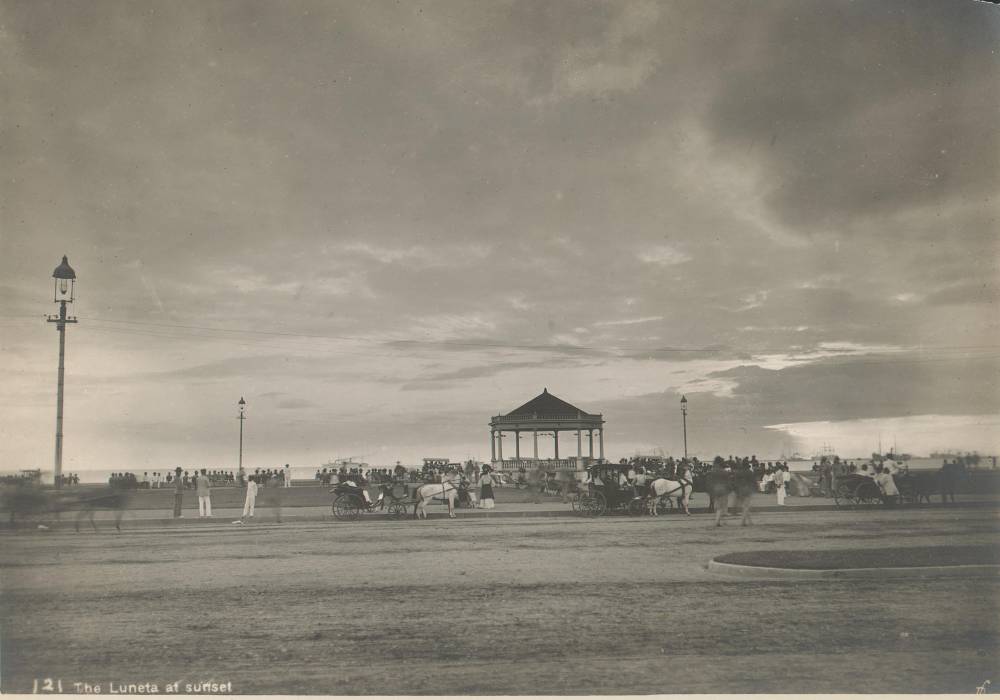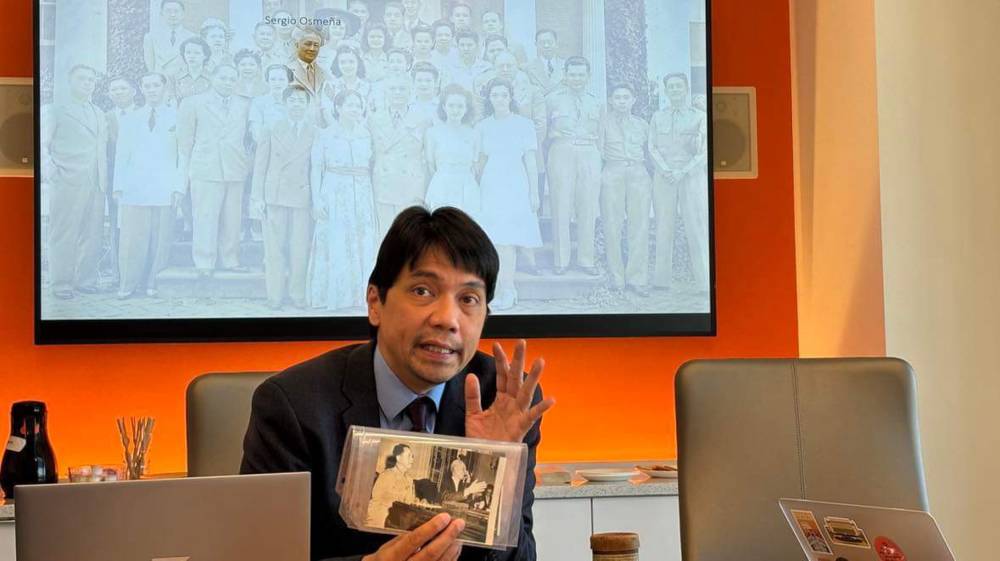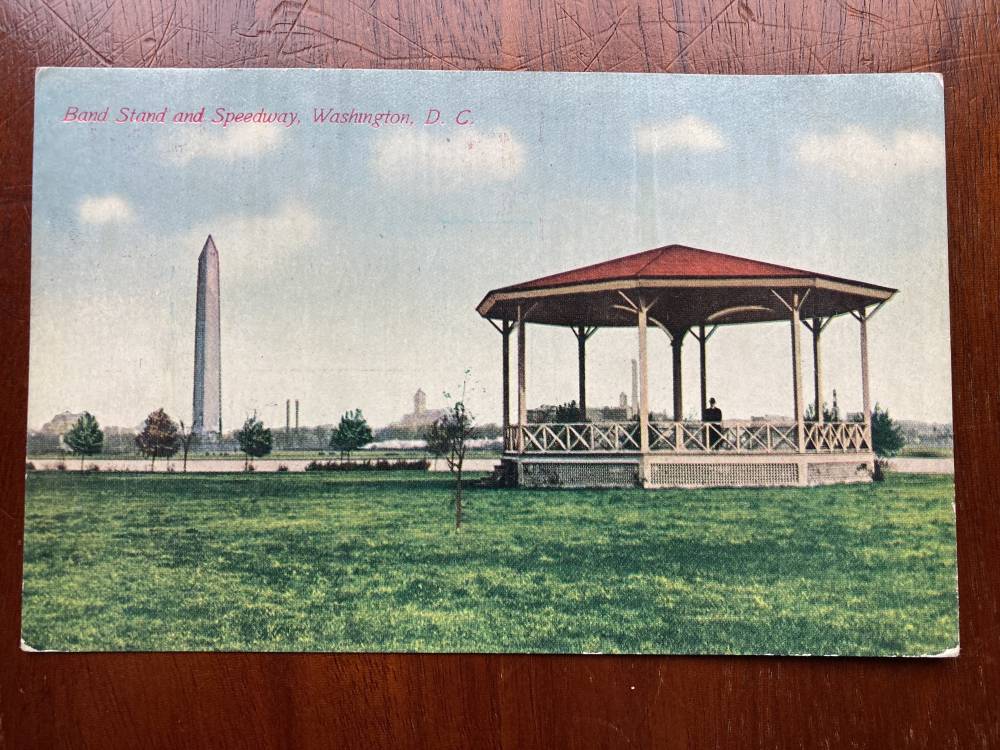How the Luneta inspired US capital—and other PH links to Washington

PH INFLUENCE ON US A photograph of Luneta taken in the early 20th century. —photos from the University of Michigan Library website and Erwin Tiongson
WASHINGTON, DC — Unknown to many, a picturesque national park in Washington, DC that features the iconic Tidal Basin and is widely known for its cherry blossom trees was inspired by Luneta Park in Manila.
US first lady Helen Taft, who had lived in the Philippines while her husband William Howard Taft Luneta Park was civilian governor general in the Philippines, wanted to have a public space in DC similar to Luneta where people could meet for social gatherings. Her husband was elected president of the United States in 1908.
Philippine and US ties first arose after Spain ceded its long-standing colony of the archipelago in 1898. It remained an American colony until the United States recognized its independence in 1946. Years later, Manila would become Washington’s oldest ally in the Indo-Pacific.
READ: Need for mini Luneta parks
During their time in the Philippines in early 1900, the Tafts spent most of their evenings at Luneta Park listening to the popular Philippine Constabulary Band, which would later be invited to Taft’s inauguration parade in DC and the launch of the park itself, the West Potomac Park.
“That Manila could lend anything to Washington may be a surprise to some persons, but the Luneta is an institution whose usefulness to society in the Philippine capital is not to be overestimated,” the first lady wrote in her memoir, “Recollection of Full Years,” published in 1914.
Connected histories
For Georgetown University professor Dr. Erwin Tiongson, a Nueva Vizcaya native now based in DC who describes himself as a community historian, this is just one of the many ways that illustrate how the Philippines and the United States in the US capital are deeply intertwined.
Tiongson and his family have spent the last 12 years digging up these kinds of stories for a passion project—dubbed as the Philippines on the Potomac—but it has been turning into an educational resource that people may look back on.
Just last year, he published a book called “Philippine-American Heritage in Washington, D.C.” that contains some of those stories they have so far discovered that trace the connected histories of the two nations along the streets of DC, which are often overlooked and rarely found in textbooks.
“When we started this project 12 years ago, in a way, we started it because we wanted something for our children,” Tiongson recently told Filipino journalists participating in a reporting tour hosted by the US Embassy in Manila.
“If you want to characterize this project that we’ve been leading, it’s an effort to find our older home right here where we live …. We were trying to find traces of our older home right around us,” said the professor, who first moved to the United States in the 1990s.
PH ‘executive experience’
Tiongson said his discoveries over the years have made him realize how Philippines-US relations became “mutually transformative.”
“I was taught to believe that the US basically created institutions in the Philippines. The derogatory term is sometimes, ‘civilized the Philippines,’” he said.
However, the United States did not start as a centralized government, and it was their colonial experience in the Philippines that taught them how to run a country, he pointed out.
“In fact, some people call the Civil War the war of the states because some states wanted certain things, including slavery, and others did not. Imagine if that was the context, and then suddenly, in 1901, they were running a country, our country, and they were also designing for the first time programs that would later become part of their federal government here,” he said.
“It’s not like they taught the Philippines how to create institutions in a way that colonial experience taught them how to create institutions. It’s been mutually transformative that many people acquired important experience in the Philippines, which they brought back to the US and changed their way of life here,” he added.
Taft, for instance, became president of the United States “on the strength of his executive experience in the Philippines,” he said.
Tiongson and his family have been conducting free walking tours around DC over the last decade for small groups of professionals, students and even diplomats, to guide them around sites that display the cultural heritage of Philippine-American ties.

PH INFLUENCE ON US. University professor Dr. Erwin Tiongson said Luneta as an inspiration and model for the DC park is just one of many Philippine “traces” of Washington’s experience in its colonial administration of the country.
“We do it pro bono, so we don’t charge anybody. It’s just to raise awareness of all these aspects of Philippine-American history,” he said.
As part of the tour, he brings along all the artifacts he has collected, from postcards to photos and other memorabilia, to show his guests.
They have identified over 100 sites in DC that showcase those Philippine-American cultural links. For instance, the Bataan Street NW was to honor the Filipino and American troops captured on the Bataan Peninsula by the Japanese during World War II. Manuel Quezon, who served as president of the Commonwealth of the Philippines, lived on K Street where he was exiled. At the time, he was a nonvoting member of the US Congress as a resident commissioner.
With the help of the Philippine Embassy in the United States, they have developed a map for a self-guided tour of these sites in DC.
There are many more stories waiting to be told. Tiongson estimated that his book only represents a fifth of all the stories he and his family have gathered over the years.
“The work never stops. I’ve been telling friends, I teach economics at Georgetown, if I retire now and if all I do is to write about everything I found, I will never finish. That’s how much materials we have,” he said.















